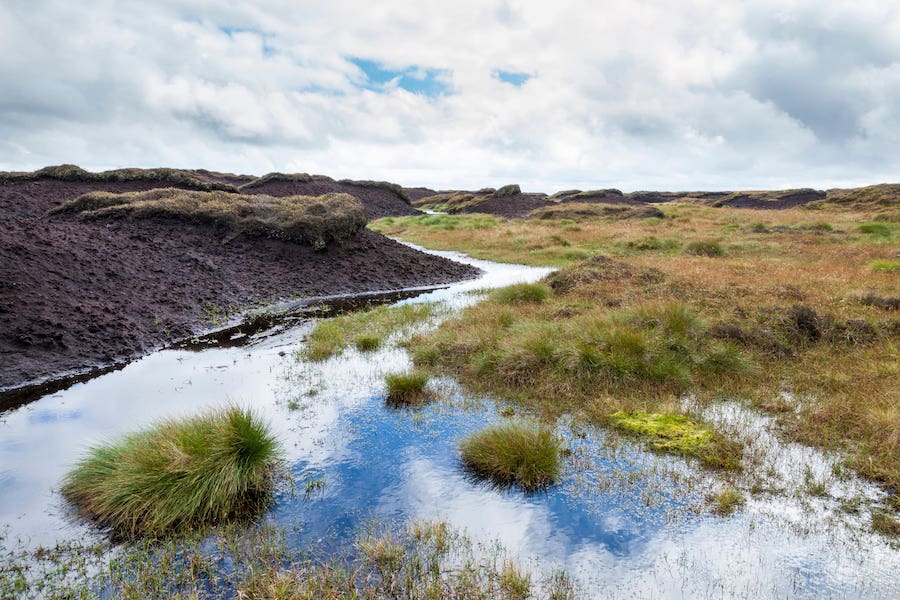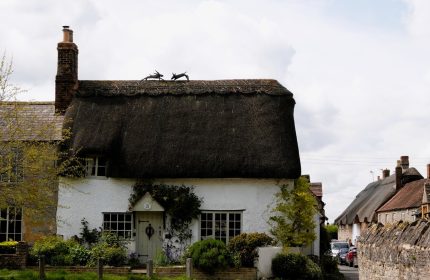Peat alternatives – and why we need to be using them
Gardeners are being encouraged to go peat-free ahead of the 2024 ban
Some garden centres and supermarkets have already stopped selling bagged peat compost, ahead of 2024, when its sale to amateur gardeners will be banned in England and Wales in a bid to protect the UK’s precious peatlands.
But next year’s ban will only apply to bagged peat compost – which means many house and garden plants, plug plants, shrubs and trees will still have been grown in peat, warns The Wildlife Trusts.
They’ve launched a new Greener Gardening: Perfecting Peat-Free guide, available to download via their website, which shows how gardeners can go peat-free.
“Peatlands are incredibly valuable as both carbon stores and habitat for wildlife. For these reasons, it is critical to immediately stop using peat products in horticulture and increase efforts to restore peatlands to a healthy condition to keep carbon in the ground,” says Sara Booth-Card, a peatland campaigner for the charity.
View this post on Instagram
Zoe Claymore, designer of the Renter’s Retreat garden at this year’s RHS Hampton Court Palace Garden Festival (Jul 4-9), has been working with growers who don’t use peat.
“Ways to easily avoid peat when gardening include making your own compost and buying larger plants (such as trees and hedge) bare rooted. Buying bare root trees and shrubs is for me a win-win, as not only are they cheaper than container grown plants, they have a fraction of the carbon footprint, no plastic pots, and no chance of peat,” she adds.
“I encourage everyone to find out where the plants they are buying are grown and what they are growing in. If it’s peat, leave it and tell the supplier why. Vote with your purse. Nature needs all the help it can get, and deciding to keep peat in the ground is more important than any border.”
The ban will be extended to the professional horticulture sector by 2026, but with exemptions, with a complete ban reportedly due by 2030.
Scottish ministers have launched a consultation as they prepare to ban the sale of peat in Scotland, but in Northern Ireland proposals to phase out peat compost sales by 2025 were reportedly dropped from its Peatland Strategy 2022-2040.
The Wildlife Trusts has issued the following advice on how amateur gardeners can go peat-free…
Look at labels

Check compost labels
Only buy compost that is clearly labelled ‘peat-free’. If you can’t see it, then the compost is likely to contain peat. ‘Reduced peat’ does not mean peat-free. If you are unsure what a plant is being grown in, ask a member of staff.
Check composting schemes
If you don’t have room for your own compost bin, some local authorities offer residents the chance to make use of municipal composting schemes, depositing their green waste in exchange for compost. Not only is this great for the environment, it can also be a great way to connect with people nearby. Search ‘community compost’ followed by your local area to find your nearest location.
Find responsible replacements
View this post on Instagram
You could replace peat-based composts with ones containing other materials, such as wool, bark and green waste. Check how sustainable your peat replacement is by visiting the Responsible Sourcing Scheme, which ranks composts on a sustainability scale taking into consideration water consumption, impacts on biodiversity and energy use.
Make your own compost

Add kitchen scraps to your compost bin
If you have room, try making your own compost. Some local authorities will provide compost bins free of charge, or partner with suppliers at a subsidised rate.
Place it out of direct sunlight, so it doesn’t get too hot. Mix in 25-50% of ‘green’ matter, like grass clippings and vegetable peelings. The rest should be made up of ‘brown’ materials such as dead leaves, paper, cardboard and woodchip, to stop the mix becoming too wet. Turn it regularly to help break down the things you have put in it and help prevent compaction.
Try nutritious feeds
View this post on Instagram
Used teabags, comfrey and nettle tea are all good natural fertilisers, says The Wildlife Trusts. Sprinkle loose tea leaves or plastic-free teabags around your plants as a top dressing, or carefully dig them in as a base dressing for seeds.
Use vegetable water
The water you cook your veg in is rich in nitrogen, so give your plants a feed with leftover cooking water, once it has cooled. And don’t put salt in the water before you cook your veg!
Be waterwise
If you let the water run out of the bottom of your pots, you will be washing away valuable nutrients from the compost, so try ‘bottom watering’, sitting your pots in a tray or saucer of water to allow the roots to take up what they need. It may take 20 minutes or a little longer, but don’t leave the roots sitting in water for an excessive period.
Mulch your plants

Use mulch to conserve moisture
This will help lock in moisture and add nutrients to the soil, depending on which mulch you use. Leaf mould and seaweed, for instance, can enrich soil.
Opt for native plants
While peat is being phased out in the UK by 2030, that isn’t the case everywhere – so encouraging UK-grown plants is another avenue to explore, The Wildlife Trusts suggests.
Greener Gardening: Perfecting Peat-Free can be downloaded at wildlifetrusts.org
The Press Association
Latest posts by The Press Association (see all)
- Dame Kelly Holmes: ‘Getting old is a privilege but ageing I don’t like’ - April 27, 2024
- 9 of the most iconic dance scenes in movies - April 27, 2024
- Why is melanoma on the rise? As new personalised ‘gamechanger’ skin cancer jab is tested - April 27, 2024
- King to resume public duties after positive cancer treatment - April 26, 2024
- 3 recipes to make from the new Hairy Bikers cookbook - April 26, 2024





















